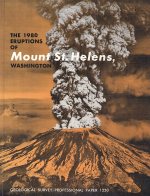|
|
|
|
|
|
|
|
|
|
|
|
|
 |
Volcanic Events, pg. 2 Mount St. Helens History, pg. 3-15 Eyewitnesses, pg. 53-67 Absolute Times, pg. 81-82, 86 Activity Sequence, pg. 127-134 Gas Studies, pg. 190-191 |
Chemical
Compositions, pg.
233-250
Ash Clouds, pg. 323-333 Blast Dynamics, pg. 379-400 Rapid Deposition, pg. 466-478 Phreatic Explosions, pg. 509-511 New Lava Dome, pg. 540-544 Ash-Fall Deposits, pg. 568-584 Water Chemistries, pg. 659-664 River Water Quality, pg. 719-731 |
GAS STUDIES
Until recently, volcanic gases have been frustrat-ingly difficult to study quantitatively or to use for monitoring of activity. Major gas vents on volcanoes are often too inaccessible or dangerous to approach for ground sampling, and gas samples from smaller vents commonly contain so much intermixed atmospheric air and water vapor of meteoric origin that concentrations of probable magmatic components such as sulfur, carbon, and hydrogen have been difficult to determine. Furthermore, many components of volcanic gases are unstable and tend to react to form new compounds; falling temperature and pressure, even during the collection process, complicate identification of equilibrium volcanic assemblages.
In the last few years, much progress has been made using airborne and ground remote-sensing techniques for measuring volcanic gases. A correlation spectrometer (COSPEC), originally designed to monitor industrial pollutants, has been successfully used for remote monitoring of volcanic SO2 emission at several volcanoes, especially by Richard Stoiber and associates of Dartmouth College. A recording hydrogen probe, which is essentially a small fuel cell that generates electricity in proportion to the amount of hydrogen available to combine with air, has been operated at Kilauea Volcano in Hawaii since 1973 by Motoaki Sato of the USGS. Finally, an airborne technique to measure CO2 in volcanic gas plumes, developed by Sato and David Harris, was successfully used for the first time at Mount St. Helens in 1980.
These ground and airborne techniques, while still partly experimental, have already produced data on compositions and rates of volcanic gas emissions from Mount St. Helens. Before May 18, emissions of SO2 were low, near limits of COSPEC detectability, despite seismic and geodetic evidence for a shallow cryptodome within the volcano; either the cryptodome was too well sealed for abundant gases to escape or hydrothermal fluids absorbed most available sulfur gases during this period (Casadevall and others). Sulfur:chloride ratios in ash leachates, which provide an indirect method of monitoring gas emission, indicated a gradual increase during this period, although no abrupt changes occurred before the May 18 eruption (Nehring and Johnston). SO2 plume emissions increased by an order of magnitude after May 18, as shown by airborne COSPEC measurements, and increased markedly again in early June, prior to the June 12 eruption. These increases probably reflect decreasing depth and less effective sealing of the dacitic magma body. After the June 12 eruption, SO2 levels remained at high levels but decreased overall during the rest of the year.
Airborne monitoring of CO2 in the plume, begun in early July, documented a total flux greater than that of SO2 and a similar general pattern of overall decreased emission later in 1980 (Harris, Sato, and others). Pyroclastic magmatic eruptions on July 22, August 7, and October 16-18 appear to have been preceded by several days of significantly decreased CO2 emissions, a pattern that may help anticipate future explosive eruptions. The total amounts of both CO2 and SO2 released to the atmosphere in 1980 exceed by several times amounts of these gases that could have been derived from the volumes of magma erupted during the monitoring period. Much of the gas appears to have emanated from unerupted magma within the volcano.
Hydrogen concentration in the ground at a site on the south flank of Mount St. Helens, relative to the local atmospheric concentration, has varied complexly since measurements began in July (Sato and McGee). Smooth diurnal variations are probably related to daily reversals of orographic winds. Irregular short-period increases are tentatively interpreted as reflecting seismically triggered emission of magmatic H2. Changes in average daily concentrations are thought to reflect mainly varying concentrations in the atmosphere from the gas plume; some such changes may have preceded by several days the magmatic eruptions in August and October, as well as several prominent gas-emission events and episodes of volcanic tremor.
Although these remote techniques have thus had some success in relating
gas abundances to volcanic activity, direct sampling of fumaroles remains
the best way to inventory the range of gas species and to sample for isotopic
analyses. Analyses of fumarole samples from the crater indicate that sulfur
is released from the magma mainly as H2S and oxidizes to SO2
as it cools in the plume (Casadevall and Greenland). High concentration
of air and water vapor in fumaroles from the flowage deposits confirms
that entrain-ment and heating of nonmagmatic gases contribute to the mobility
of pyroclastic flows. Study of encrustations at fumaroles indicates that
sublimate mineralogy reflects fumarole temperature and subsequent cooling
and hydration history (Keith and others). Isotopic analyses of carbon,
oxygen, and hydrogen from fumarolic gases and thermal waters show large
deviations from surficial meteoric and organic compositions (Barnes and
others; Evans and others). These data demonstrate major volatile contributions
from high-temperature environments, probably in part directly from the
magma and in part from interactions between ground water and heated rocks.
| START & IMAGES |
|